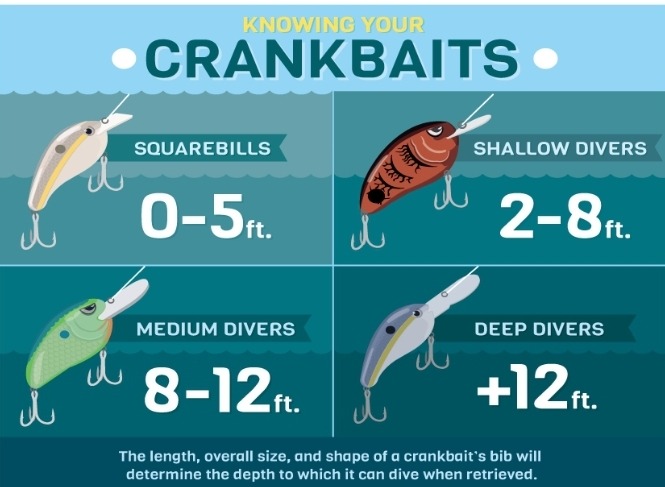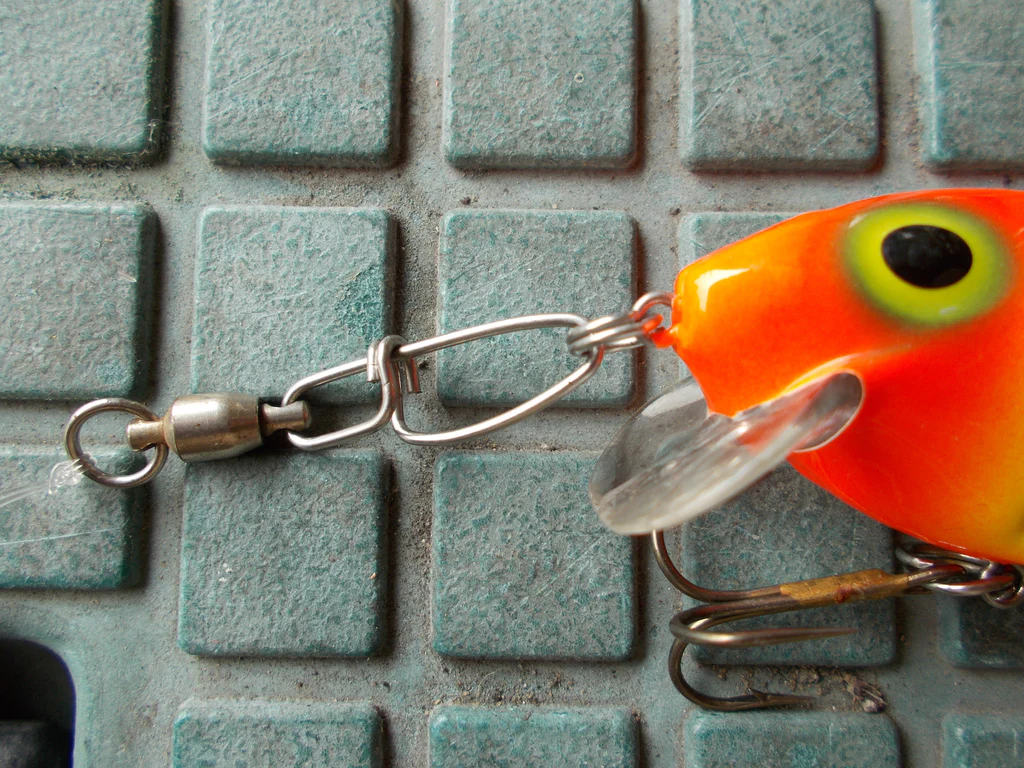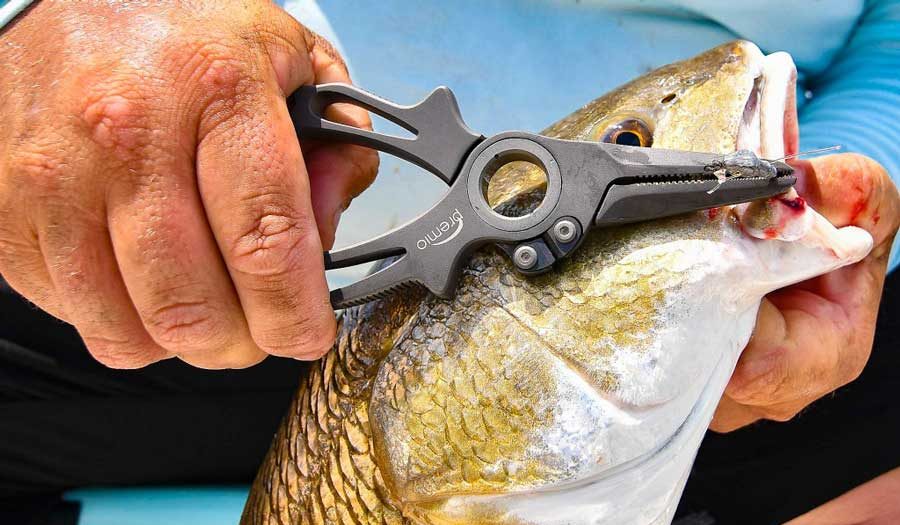Largemouth bass are one of the most popular and challenging freshwater game fish to target in the United States. To improve your chances of landing these prized fish, having the right equipment setup is crucial. This article provides a detailed guide on the essential gear needed for largemouth bass fishing, including rods, reels, lines, lures, terminal tackle, and other essential accessories.
Essential Rod and Reel Setups
Spinning Setup
A spinning setup is versatile and user-friendly, making it ideal for both beginners and experienced anglers. The recommended rod for largemouth bass fishing using a spinning reel is typically a medium to medium-heavy power rod, around 6’6” to 7’0” in length. A fast action rod is preferred as it provides the sensitivity needed to feel subtle bites and offers a quick hookset.

For the reel, a size 2500 to 3000 spinning reel with a smooth drag system is ideal. Look for a reel with a gear ratio between 5.2:1 and 6.2:1, which balances speed and power, making it suitable for a wide range of techniques, from finesse presentations like drop shots and wacky rigs to casting lighter lures.
Spinning setups are particularly effective for finesse techniques where lighter lures and delicate presentations are necessary, such as when fishing in clear water or targeting pressured fish.
Baitcasting Setup
A baitcasting setup is the go-to choice for many serious bass anglers due to its accuracy and ability to handle heavier lures and lines. For largemouth bass, a medium-heavy to heavy power baitcasting rod, typically 7’0” to 7’6” in length, is recommended. A fast to extra-fast action rod works well for techniques that require a strong hookset, such as fishing with jigs, Texas rigs, or swimbaits.
When choosing a baitcasting reel, look for one with a gear ratio of 6.4:1 to 7.3:1. This range offers a good balance for most bass fishing techniques, providing the speed to retrieve lures quickly and the power to reel in big fish. The braking system on the reel should be adjustable, allowing you to control the spool speed and reduce the risk of backlashes, especially when casting into the wind or using lighter lures.
The baitcasting setup excels in scenarios where casting accuracy is crucial, such as when targeting bass around docks, laydowns, or other forms of heavy cover. It also offers better control when using heavier lures and lines.
Flipping and Pitching Setup
Flipping and pitching are techniques used to target largemouth bass in heavy cover, such as thick vegetation, brush, or submerged timber. For these techniques, a specialized setup is required. A heavy power rod, often 7’6” or longer, with a fast or extra-fast action is ideal. The longer rod length provides the leverage needed to pull big bass out of dense cover.
A high-speed baitcasting reel with a gear ratio of 7.1:1 or higher is recommended for flipping and pitching. The faster retrieve allows you to quickly pick up slack line and get the fish out of cover before it can tangle or break off.
This setup is designed to handle heavy lines, typically braided line with a 50-65 lb test, which is strong enough to resist breaking when pulling bass through thick vegetation.
Line Selection

Monofilament Line
Monofilament line is a popular choice for bass fishing due to its versatility and ease of use. It has some stretch, which can be beneficial when fishing with treble hook lures like crankbaits or topwater baits, as it helps to absorb the shock of a strike and reduce the chances of pulling the hooks out of a fish’s mouth.
Monofilament is also buoyant, making it ideal for topwater presentations where you want the lure to stay on the surface. However, its visibility and stretch can be drawbacks in situations where sensitivity or low visibility is crucial.
Fluorocarbon Line
Fluorocarbon line is nearly invisible underwater, making it an excellent choice for clear water or when bass are highly pressured. It has low stretch, which enhances sensitivity and allows you to detect subtle bites more easily, especially when fishing with soft plastics or jigs.
Fluorocarbon is also more abrasion-resistant than monofilament, making it a better option for fishing around rocks, wood, or other structures where the line could get damaged. It sinks, which is beneficial when fishing deeper water or when using techniques that require the lure to stay close to the bottom.
Braided Line
Braided line is known for its incredible strength and lack of stretch, which provides unmatched sensitivity and hook-setting power. It’s the preferred choice when fishing in heavy cover, such as thick grass, lily pads, or around heavy timber, where you need the line to cut through vegetation and resist breaking.
The main drawback of braided line is its high visibility, which can spook fish in clear water. To counter this, many anglers tie a fluorocarbon leader to the end of the braid when finesse or stealth is required.
Top Lure Types for Largemouth Bass
Crankbaits
Crankbaits are a versatile lure that can cover a lot of water quickly, making them great for locating active bass. They come in various types, including shallow, medium, and deep-diving models, each designed to target fish at different depths.

Shallow-diving crankbaits are ideal for fishing around shallow cover or during the spring when bass are spawning. Medium and deep-diving crankbaits are effective when bass are holding in deeper water or around offshore structures during the hotter summer months.
Spinnerbaits
Spinnerbaits are another versatile lure, particularly effective in murky water or low-light conditions. The flash and vibration produced by the spinning blades attract bass from a distance, making spinnerbaits excellent for covering water quickly.
The different blade types (willow, Colorado, Indiana) offer varying levels of flash and vibration. Willow blades are faster and produce less vibration, making them ideal for clear water, while Colorado blades create more vibration, making them better suited for murky water or slow retrieves.
Soft Plastics
Soft plastic lures, such as worms, creature baits, and swimbaits, are a staple in bass fishing. They can be rigged in various ways, including Texas rig, Carolina rig, or weightless, depending on the situation.
Soft plastics are particularly effective when bass are less aggressive, such as during the post-spawn period or in cooler water. They can be fished slowly along the bottom, around cover, or through vegetation, offering a subtle and realistic presentation that bass find hard to resist.
Jigs
Jigs are one of the most effective lures for targeting big largemouth bass, especially in cold water or around heavy cover. Football jigs are great for dragging along rocky bottoms, while flipping jigs excel in pitching into heavy cover.
When fishing with jigs, the key is to use a trailer, such as a craw or a chunk, to add bulk and movement to the presentation. Jigs can be worked slowly along the bottom, hopped, or swam through cover, making them a versatile option for various conditions.
Topwater Lures
Topwater lures are exciting to use, offering explosive strikes as bass attack from below. Poppers, frogs, and walking baits are popular choices for fishing over shallow cover, such as weed beds or submerged vegetation.

Topwater lures are most effective during early morning, late evening, or overcast days when bass are more likely to be feeding near the surface. They can also be productive during the post-spawn period when bass are guarding their nests.
Terminal Tackle
Hooks
Choosing the right hook is crucial for successful largemouth bass fishing. Common hook types include Extra Wide Gap (EWG), straight shank, and offset hooks, each suited for different lure types and fishing techniques.
EWG hooks are versatile and work well with a variety of soft plastics, offering a good balance of hook-setting power and weedless presentation. Straight shank hooks are often used with flipping and pitching setups, providing a strong hookset in heavy cover.
Weights
Weights are essential for getting your lure to the desired depth and keeping it there. Bullet weights are commonly used with Texas rigs, allowing the lure to slip through vegetation easily. Drop shot weights are designed for finesse presentations, keeping the bait suspended just off the bottom.
Choosing the right weight depends on the depth, cover, and current you’re fishing in. Heavier weights are needed for deeper water or faster currents, while lighter weights are better for shallow water or slow presentations.
Swivels and Snaps
Swivels and snaps can be useful for preventing line twist and making quick lure changes. However, they can also affect the action of certain lures, so it’s important to use them judiciously. In most cases, tying directly to the lure provides the best action and presentation.

Additional Gear and Accessories
Tackle Boxes and Storage
Keeping your lures, hooks, and other terminal tackle organized is essential for efficient fishing. Tackle boxes with compartments and waterproof seals help protect your gear and make it easy to find what you need when you’re on the water.
Polarized Sunglasses
Polarized sunglasses are a must-have for bass anglers. They reduce glare on the water’s surface, making it easier to see fish, underwater structures, and your lure’s action. This is especially important when sight fishing or when navigating through shallow or rocky areas.
Fishing Pliers and Tools
A good pair of fishing pliers is indispensable for removing hooks, cutting line, and making adjustments to your tackle. Other useful tools include line clippers, hook sharpeners, and a scale for weighing your catch.

Fishing Apparel
Comfort and protection are important when spending long hours on the water. Lightweightprotection from the sun, as well as moisture-wicking materials to keep you dry and comfortable. Long-sleeve shirts with UPF protection, wide-brimmed hats, and buff-style face coverings are excellent choices for sun protection, while rain gear is essential for staying dry during unexpected downpours.
By setting up your equipment properly and choosing the right gear for the conditions, you can greatly enhance your chances of success when fishing for largemouth bass. Whether you’re just starting or looking to fine-tune your setup, these tips will help you be more prepared and effective on the water.

Robert Smith is the proud owner of Bait Barrels and Bows, a premier fishing sports store established in 1989. With over three decades of experience in the industry, Robert has honed his skills to become an expert angler, sharing his vast knowledge and passion for fishing with enthusiasts around the world. Through his store and writings, Robert provides invaluable tips and guidance, helping both novice and seasoned anglers improve their techniques and enjoy the sport to its fullest. His commitment to the fishing community is evident in his dedication to quality products and excellent customer service.

